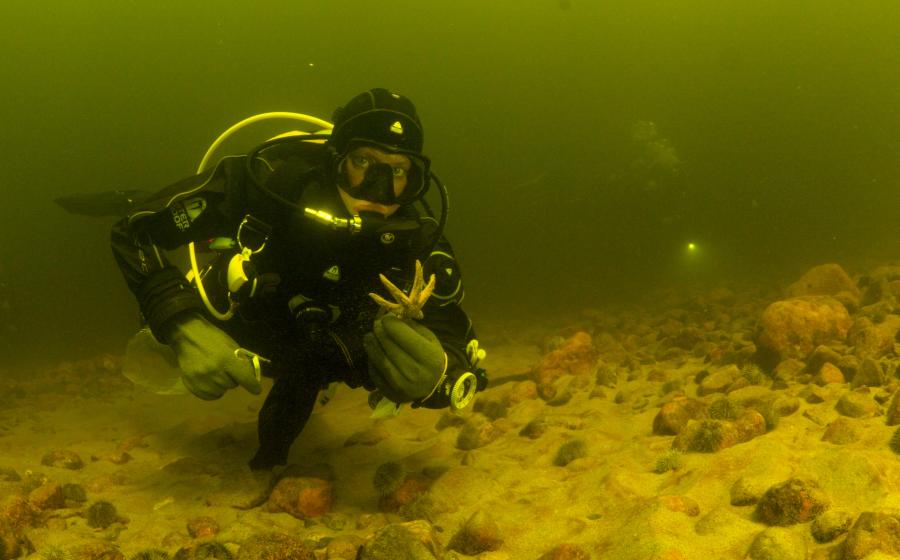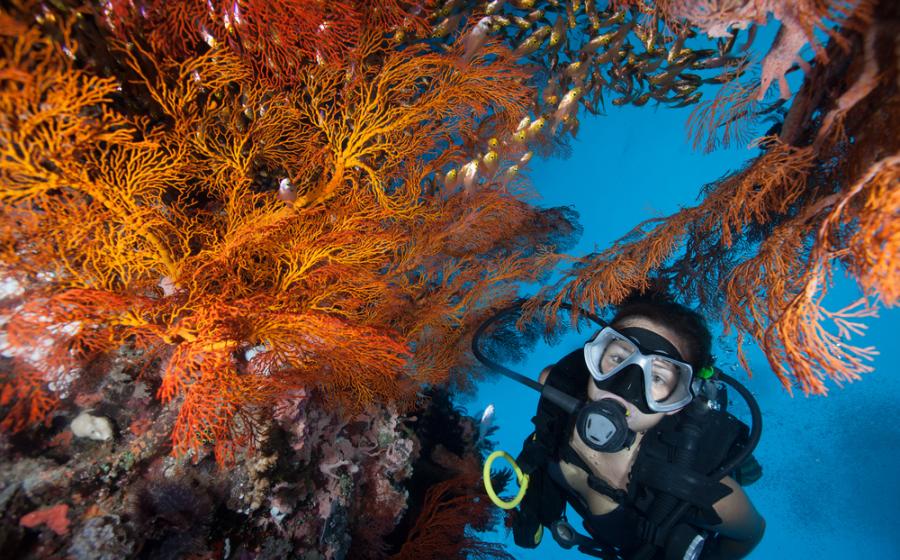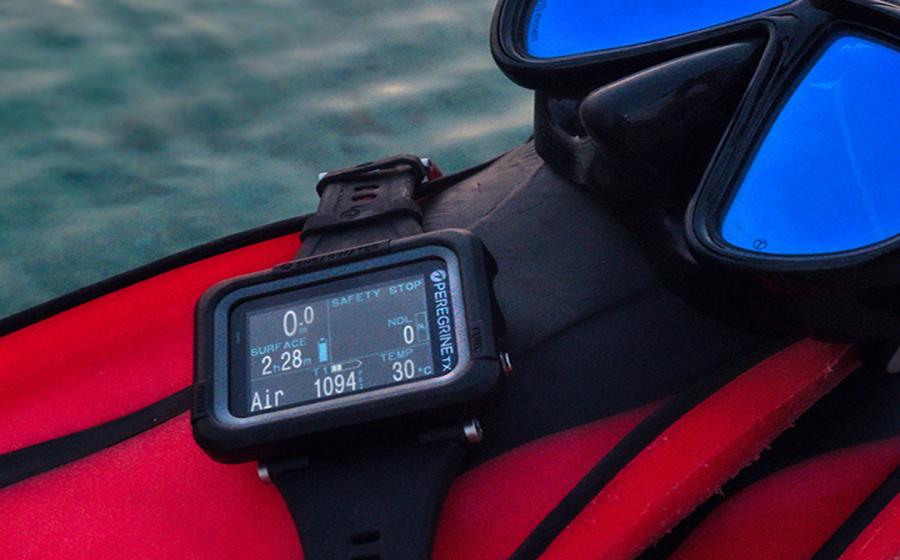9 Reasons to Book a Liveaboard

Richard CondlyffeLiveaboards like BVI Aggressor allow guests to dive many of the best sites a destination offers.
1. Dive All Day (If You Want To)
For those who want to dive all day, liveaboards deliver. Commutes between dive sites tend to be short on liveaboard itineraries, and more than one dive on the same site is often merited. A typical full day schedule might look something like this: light breakfast, dive, full breakfast, dive, lunch, dive, snack, late afternoon or night dive, dinner, sleep.
In the British Virgin Islands, four dives a day was standard, and this is where some of the advantages of a liveaboard became evident. For example, the RMS Rhone is one of the Caribbean’s most famous shipwrecks. Given how much there is to see, a full day of diving on the Rhone was planned—made possible by not needing to charter a dayboat to and from the mainland. BVI Aggressor was able to anchor just a few minutes from the Rhone, and tenders were used for a short transfer to the wreck, thus making four dives easy to complete in a day. We explored the bow, midsection and stern on separate daytime dives, seeing the scale of the ship’s structure and huge propeller, as well as small seahorses hiding in the adjacent seagrass and moray eels poking their heads out. A fourth dive allowed guests to see the wreck come alive at night with a different selection of creatures, including a variety of crabs traversing the seafloor and Caribbean reef squid swimming through the dark.

Richard CondlyffeA diver photographs a seahorse beside the wreck of the Rhone
On some liveaboard itineraries, circumstances may occasionally result in fewer dives on some days. For example, repeated deep dives where nitrogen load becomes a limiting factor, or needing to set sail early to reach the next destination the following morning. One thing is always the case: The access and convenience that liveaboards present will afford divers the opportunity to get the most out of their chosen trip.
2. Exclusive Access
Some of the world’s most famous dive sites—and many lesser-known gems—can only be accessed by liveaboard. For example, the spectacular Socorro, part of Mexico’s remote Revillagigedo Islands, requires a daylong journey. The rewards of the world’s friendliest oceanic mantas and bottlenose dolphins, as well as several species of shark, make it well worthwhile. Similarly, Wolf and Darwin islands, the most northerly points of Galapagos, are only accessible by liveaboard and are a memorable reward at the end of the journey.

Richard CondlyffeA spiny lobster on Santa Monica Rock near Norman Island
Liveaboards also consider seasonal weather patterns when planning their itineraries. Of course, smooth sailing can never be guaranteed, but in some parts of the world—Indonesia and the Maldives, for example—dive destinations often vary by season to take advantage of weather patterns and maximize the odds of good diving conditions.
While there isn’t much seasonality to consider in the Caribbean, boat captains in this region will always monitor weather and ocean conditions in order to avoid rough seas.
When diving from a land base, some sites may be close by, while others would require a long boat ride. In the BVI, for example, being based in Virgin Gorda to the northeast would give easy access to several sites around that island, but would require a lengthy commute to and from the Rhone wreck for a two-tank dive trip. Diving BVI by liveaboard makes the entire stretch of islands easily accessible and maximizes dive opportunities, as your floating hotel can make its way toward the next site during nondiving hours.
Related Reading: My First-Ever Liveaboard Trip

Richard CondlyffeA school of snapper at Carrot Shoal
3. Easy In, Easy Out
Imagine the convenience of leaving your cabin and walking for a few seconds to find yourself on the dive deck, getting suited up, listening to a knowledgeable dive briefing, then entering the water after just a short boat ride or sometimes jumping straight off the back platform of the mothership.
When the dive’s over and you quickly get back on board, you can immediately relax with a hot chocolate, a refreshing shower and a change into dry clothes. This efficient liveaboard process is a key factor in creating the opportunity for four or even five dives in a day.
4. Expand Your Skills
A liveaboard presents the opportunity for many dives in a short amount of time. Such a concentrated amount of diving means lots of time for practice, which by itself will improve one’s diving skills. Many liveaboards offer training courses on board, such as PADI Enriched Air (Nitrox) Diver or Advanced Open Water Diver. These learning opportunities are further enhanced by the communication and understanding that develops between guest and divemaster over the course of a week, creating a productive learning environment.
Some liveaboards, including the Aggressor fleet, also have a photo pro on board who will happily work with guests to help improve photography skills.

Richard CondlyffeThe hulking propeller of the RMS Rhone
5. Immerse Yourself In The Destination
During the course of our weeklong itinerary, BVI Aggressor explored all the main diving highlights of the British Virgin Islands. Starting at port in Road Town, Tortola, we headed south to the reefs of Norman Island to begin our diving. From there, the captain navigated northeast, hitting sites along Salt Island, then Virgin Gorda, before cruising back to Road Town at week’s end. En route, we explored an inviting combination of reefs and wrecks, enabling a full immersion into BVI diving.
Guests enjoyed healthy reefs that see less dive traffic than many Caribbean dive destinations, home to large schools of snapper found sheltering around overhangs and trumpetfish camouflaging themselves in gorgonians. I particularly enjoyed West Seal Dog, a dive site near Virgin Gorda, where I was able to photograph expanses of branching fire coral with sea-foam backgrounds as swells surged in the shallows beyond.

Richard CondlyffeA skeleton duo battles atop the Willy T wreck
The impressive wreck of the RMS Rhone lies just off Salt Island. This 310-foot-long iron-hulled steamship sank in 1867 during a hurricane when the vessel slammed into Black Rock Point and broke into two sections. The wreck is one of BVI’s most popular dive attractions and was even used in the filming of the 1977 movie The Deep. Other wrecks we explored included the Willy T, with its added skeleton structures making for an entertaining dive as well as some fun photo opportunities. Wreck Alley, near Cooper Island, is made up of four separate structures that make for a great wreck-intensive dive site. It seemed the wrecks stole the show for many of BVI Aggressor’s guests on my trip. And there’s no way we would have seen them all had we not been traveling via liveaboard.
Related Reading: Diving RMS Rhone in the Shadow of a Storm

Richard CondlyffeA trumpetfish seeks shelter among corals at Carrot Shoal
6. Skip A Dive Or Two (If You Want)
Not everyone wants to do four dives every day. Fortunately, liveaboards recognize this and provide alternatives focused on rest and relaxation. Those operating where the weather is warm usually have a generous sun deck to relax on. Many Indo-Pacific liveaboards also have an onboard masseuse, and pricing is usually very affordable. The salon may have an extensive book collection to choose from, built by donations from previous guests.
On board BVI Aggressor, the sun deck and hot tub were popular with guests who chose to skip the post-lunch dive to relax. Some skipped the last dive of the day to sip on a pre-dinner cocktail and enjoy the sunset. BVI is known for being the sailing capital of the Caribbean, and I have to say, there was something very relaxing about seeing the sun setting behind the islands while sailboats navigated calm waters.

Richard CondlyffeA Caribbean reef squid on a night dive of the Rhone wreck
7. Gourmet Experience
If you think being on a boat means compromising on food, think again! It never ceases to amaze me that liveaboard chefs can create such amazing culinary delights for every meal in such a small kitchen. Most every liveaboard caters to diners with exceptional food and plenty of options. It’s usual for menus to incorporate both Western and local dishes, and individual dietary restrictions, such as gluten-free and vegetarian, can be accommodated.
My BVI Aggressor experience was no different. Our chef was first-class, and the menu showed off his creativity. Usually, lunch was buffet style and dinner was served at the table.

Richard CondlyffeThe Beata tugboat is one of four purpose-sunk vessels at Wreck Alley near Cooper Island
8. More To See
When an itinerary allows it, another way to take a break from diving is to join a land excursion, such as the popular Baths National Park at the southwest tip of Virgin Gorda, BVI. This natural attraction features a collection of massive granite boulders as large as 40 feet in diameter, with white-sand beaches and secret rock pools, as well as hiking, swimming and snorkeling opportunities.
Examples of other famed land excursions around the liveaboard world include the opportunity to see Komodo dragons in Komodo, Indonesia. Or giant tortoises and blue-footed boobies in the Galapagos Islands. Both worthy deviations from diving.
Related Reading: 8 Things to Know Before Scuba Diving in Galapagos

Richard CondlyffeA sponge crab pokes out into the darkness on a Rhone night dive
9. New Friends And Memories
You know when you join a liveaboard you already have at least one thing in common with other guests. Scuba diving has the power to forge new friendships and foster camaraderie. Opportunities for storytelling are plentiful after a full day underwater, and it’s not unusual for what was in reality an 8-foot-long tiger shark to be 14 feet by the end of an evening recounting the day’s dives! Liveaboards will enhance one’s diving résumé with experiences and memories that last a lifetime. I’ve personally made great new friendships on liveaboards, and today the friends I travel with are all people I met on past liveaboard trips.
Motivated divers considering a liveaboard vacation won’t regret it. And for the many who’ve already tried it, it’s become the only way to go! Long live eat, sleep, dive!
Contact Info
800-348-2628









